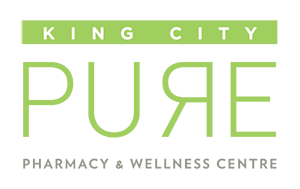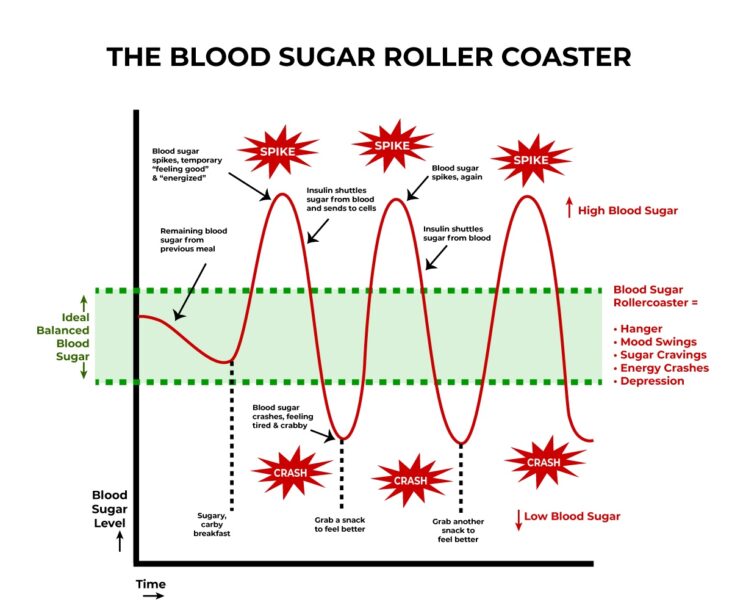Mid-morning and Mid-afternoon energy crashes are common. In fact, they are so common that we don’t even realize we are experiencing them. It’s almost normal to feel tired, irritable, unable to concentrate a few times during the day and most of us treat these crashes with a cup of coffee.
These crashes are caused by what is called “The sugar roller coaster”. Even if you are a fan of roller coasters, this is one roller coaster you want to avoid. Our brains need a steady supply of glucose (or sugar) to function optimally. When we start our day with a cup of coffee which acts as a stimulant for the brain or the Standard North American breakfast consisting of bagels, cereal or muffins, we get a boost of sugar for the brain. We feel good and ready to start our day.
What happens next in the body is that as soon as a surge of sugar comes in from these high glycemic foods, the body secretes insulin to put the sugar into cells as too much sugar floating around in the bloodstream is not good for the body. The high that we got from all that sugar suddenly drops down to the low (energy crash) as that sugar is now removed from the bloodstream quickly. The brain needs a constant supply of sugar to function and when that supply dwindles, you start feeling tired, irritable and craving more sugary foods or a stimulant to lift you out of this crash.
There is a better way!!! and the secret is in the breakfast you eat
Now the breakfast doesn’t have to be at 7 am or 8 am. It’s the first meal of the day that breaks the fast from overnight and hence it’s called breakfast. I am a fan of intermittent fasting so my breakfast is at 10 or 11 am. The purpose of the first meal of the day is to provide you with a steady supply of sugar for the brain to function optimally
NO SUGAR “HIGHS” AT THE BEGINNING MEANS NO SUGAR “LOWS” LATER ON!!
The two most important things you should include in the first meal of the day are:
- Low glycemic foods
- they are digested slowly and release sugar slowly into the bloodstream, supplying the brain with a steady supply of sugar without the highs and the lows
- Examples of low glycemic foods you can eat for breakfast are oats, quinoa, beans, sweet potatoes, nut butter, whole grain bread (not whole wheat), baked goods made with almond flour, low glycemic fruits like berries or apples, green leafy vegetables.
- Proteins
- they don’t raise the blood sugar or the insulin levels
- examples of proteins you can eat for breakfast are eggs, protein shakes, good quality meat, chicken or turkey
- Low glycemic foods
When you start your day strong with the right breakfast, you will notice your productivity, your mood and stamina all increase throughout the day as you don’t fall prey to the energy crashes.
Yours in Health & Wellness
Aziza Amarshi, RPh, RHN
Pharmacist, Holistic Nutritionist

